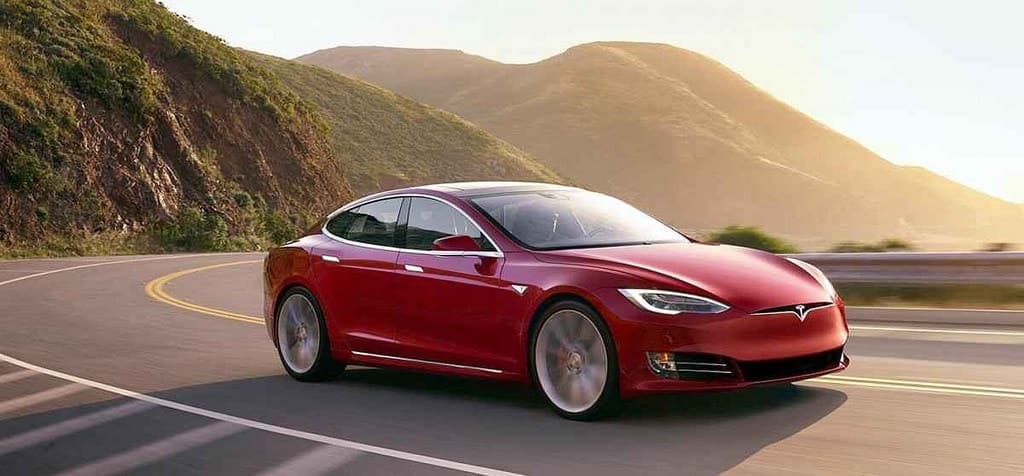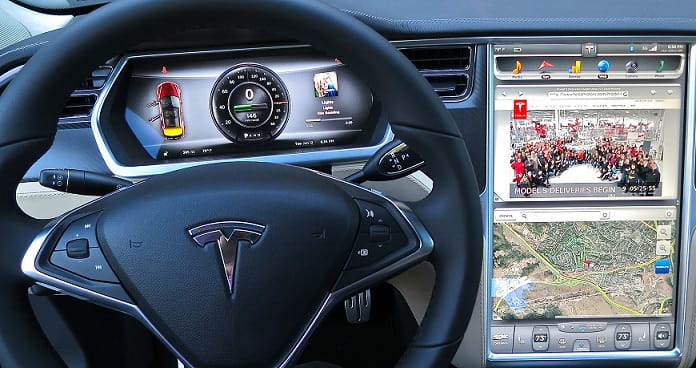
Identifying visiting devices adds a powerful layer of insight to your analytics package, allowing you to understand and improve the user experience for all your visitors.
With that exact aim in mind, we keep our list of identifiable devices up to date so users are never in the dark. Enter the latest addition - the Tesla Motors Vehicle Multimedia System.
Why optimize for the Tesla in-car browser?
There are obvious legal and practical restrictions around how engaged a driver can be whilst in control of a car. Still, understanding the limitations and features of the browser being used is an important consideration, while addressing the user's context shouldn't be ignored either - they're likely to be comfortable, perhaps leaning back in their Tesla's leatherette seats while taking a break from traffic, or from the hectic world outside the car.
At a minimum, you need to optimize for touch-screen input where you know a Tesla dashboard browser (called the QTCarBrowser) is in use. User posture is also a factor, as is diagonal screen size (17 inches in the Model S) and the likely distance they are from the screen itself.
Location-based advertising could also see some easy wins from the ability to identify the Tesla browser. Similar to how mobile ad-targeting currently uses location data to customize offers and ad types for, say, a "Starbucks in your area", knowing a potential customer is only a few miles away and might enjoy a coffee is a gold mine for successful campaign management.
Trends in mobile advertising will most likely be reflected for in-car browsing, too: think "traditional" location-based advertising, but with a much wider geo-net.

Here's an example User Agent from one such Tesla browser configuration:
| Tesla Vehicle Multimedia System |
|---|
| Mozilla/5.0 (X11; Linux) AppleWebKit/534.34 (KHTML, like Gecko) QtCarBrowser Safari/534.34 |
We all know Tesla, and we all know about CEO Elon Musk's lofty aims around space travel, Mars colonisation and the preservation of humanity. But did you know the Model S (pictured above) goes from 0-60mph in 2.5 seconds? Terrifying.
Back on Earth, Tesla owners are already enjoying a stellar range of connectivity in their cars, with a recently-upgraded browser receiving positive reviews (the previous one was a little laggy).

There are also a wide range of apps available, the EVEConnect for example, which enables control of a smart home from a Tesla dashboard.
EVEConnect Version 2 integrates all of your connected home devices and brands into one convenient environment.
You can control lighting, heating, security, lock/unlock doors - basically anything connected to the Internet. You can even create a sequence of commands to kick into action when you arrive home, so the lights are on, the house is warm and your favourite music greets you at the door.
In a more practical move, Tesla have also integrated a Waze-like, crowdsourced traffic data feature which will, once reaching critical mass, provide real-time traffic updates for all. As more car manufacturers add connectivity in the coming years, these features will provide an unprecedented level of accurate data for all road users.
With Tesla already making moves into the area of smart cities, the future looks bright, clean, and hopefully free of traffic jams.
Images By Automobile Italia via Flickr, Steve Jurvetson Flickr and AppleYardAgency.com.



